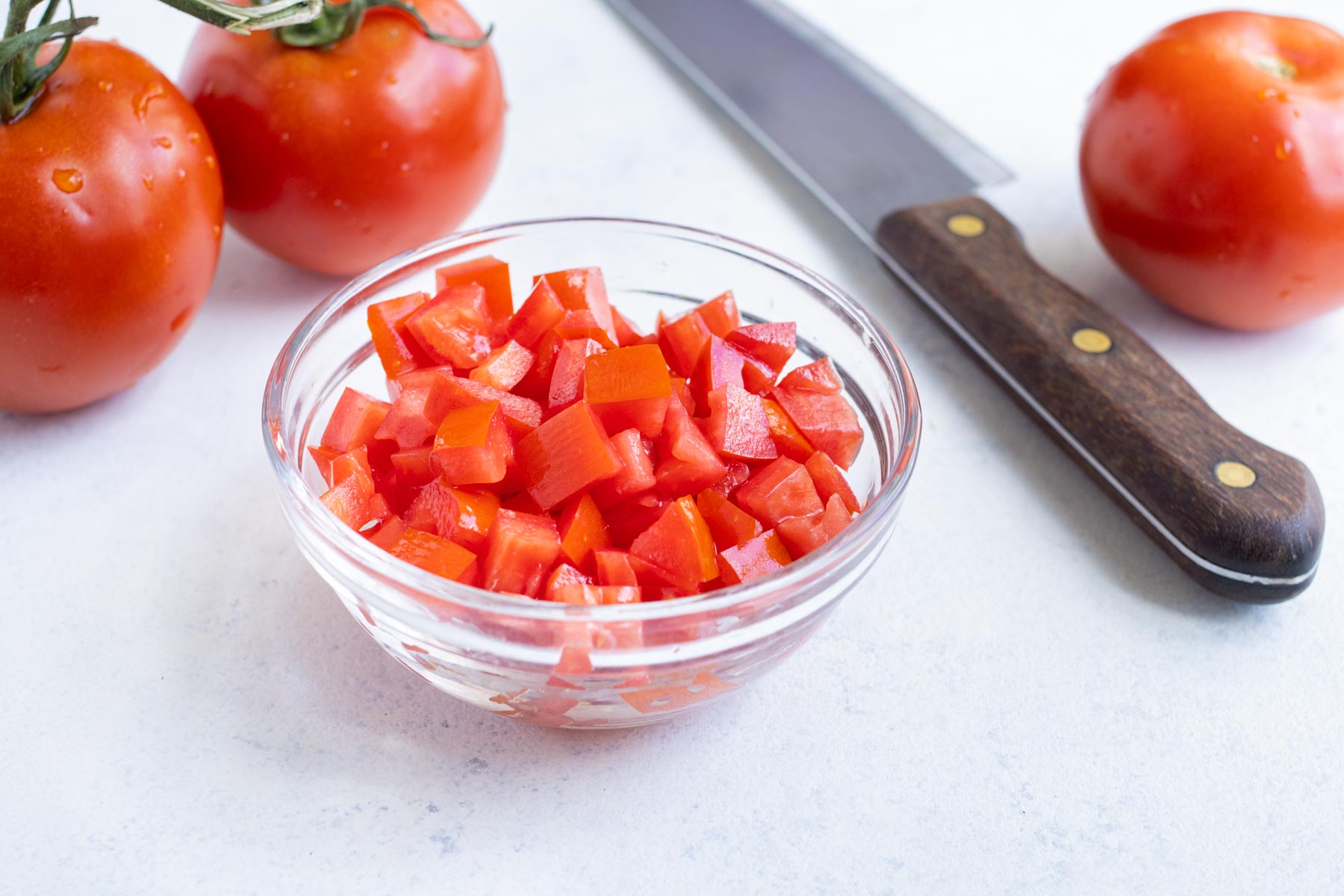

Articles
How To Store Diced Tomatoes
Modified: February 24, 2024
Learn how to store and preserve diced tomatoes in this informative article. Discover the best methods and tips for keeping your tomatoes fresh for longer-lasting enjoyment.
(Many of the links in this article redirect to a specific reviewed product. Your purchase of these products through affiliate links helps to generate commission for Storables.com, at no extra cost. Learn more)
Introduction
Welcome to the wonderful world of diced tomatoes! These versatile little gems are a staple in many cuisines, adding vibrant color, tangy flavor, and a dose of essential nutrients to recipes. Whether you’re a seasoned home cook or just starting your culinary journey, knowing how to properly store diced tomatoes is essential for maximizing their freshness and taste.
In this article, we’ll explore the benefits of storing diced tomatoes, provide tips on selecting ripe tomatoes, discuss different methods of storing them, and share some creative ways to use frozen diced tomatoes. By the end, you’ll be equipped with the knowledge to keep your diced tomatoes at their peak and effortlessly incorporate them into your favorite dishes.
So, let’s dive in and uncover the secrets of storing diced tomatoes!
Key Takeaways:
- Properly storing diced tomatoes preserves their freshness, convenience, and nutritional value, allowing for year-round enjoyment in various dishes, from soups to salsas.
- Whether refrigerating, freezing, or canning, storing diced tomatoes offers versatility, cost savings, and the taste of summer even when tomatoes are out of season.
Read more: How To Store Diced Onions
Benefits of Storing Diced Tomatoes
Storing diced tomatoes not only extends their shelf life but also offers several benefits that make them a convenient and valuable ingredient in your kitchen. Here are some of the advantages of keeping diced tomatoes on hand:
- Convenience: Having diced tomatoes readily available can save you time and effort in meal preparation. Diced tomatoes are a common ingredient in numerous dishes like soups, stews, sauces, and salsas. By storing them properly, you can eliminate the need for frequent trips to the grocery store.
- Seasonal Availability: Tomatoes are typically harvested during specific seasons, and their availability can vary throughout the year. By storing diced tomatoes, you can enjoy their fresh flavor and vibrant color even when they’re not in season.
- Nutritional Value: Diced tomatoes are a rich source of essential nutrients, including vitamins A, C, and K, as well as potassium and lycopene. By storing diced tomatoes, you can retain the nutritional value of fresh tomatoes and incorporate them into your meals whenever you please.
- Meal Versatility: The versatility of diced tomatoes makes them a versatile ingredient in a variety of dishes. From classic Italian pasta sauces to Mexican salsa and Indian curries, diced tomatoes can elevate the flavors of your favorite recipes.
- Cost Savings: Buying fresh tomatoes in bulk when they’re in season and storing them for later use can be a cost-effective strategy. It allows you to take advantage of lower prices and prevents wastage, ultimately saving you money in the long run.
Now that you understand the benefits of storing diced tomatoes, let’s move on to the next section, where we’ll explore how to select ripe tomatoes for optimal flavor and texture.
Selecting Ripe Tomatoes
When it comes to storing diced tomatoes, selecting ripe and high-quality tomatoes is crucial. Here are some tips to help you choose the best tomatoes for dicing and storage:
- Appearance: Look for tomatoes that have a vibrant, uniform color. Avoid tomatoes that have bruises, blemishes, or green patches, as they may not be fully ripe.
- Firmness: Give the tomato a gentle squeeze; it should be firm but slightly yielding. Avoid tomatoes that are too soft, as they may be overripe and prone to spoilage.
- Fragrance: Take a whiff of the tomatoes. Ripe tomatoes should have a sweet and slightly earthy aroma. A lack of fragrance could indicate an underripe tomato.
- Weight: Opt for tomatoes that feel heavy for their size. This indicates that they are juicy and packed with flavor.
- Variety: Choose the right tomato variety for your intended use. Some varieties, such as Roma or San Marzano, are known for their meatiness and are great for dicing and storing.
Remember, the perfect tomato for dicing and storing may vary depending on personal preference and the recipe you plan to use them in. Don’t be afraid to experiment and discover your favorite varieties!
Now that you’ve selected the ripest tomatoes, it’s time to move on to the next step: preparing the tomatoes for storage and dicing.
Preparing the Tomatoes
Properly preparing the tomatoes before dicing and storing is essential to maintain their quality and flavor. Here are the steps to follow:
- Wash the Tomatoes: Start by rinsing the tomatoes under cool running water to remove any dirt or debris. Gently rub them with your hands to ensure a thorough cleaning.
- Remove the Stem: Use a sharp knife to cut off the stem end of each tomato. This step helps to create a more even surface for dicing.
- Blanch the Tomatoes (optional): If you prefer to remove the skins from the tomatoes before dicing, blanching is a simple technique. Boil a pot of water and make a small “X” incision on the bottom of each tomato. Place them in the boiling water for about 30 seconds, then transfer them to an ice bath. The skins should easily peel off.
- Core and Dice: Once the tomatoes are prepped, you can proceed to core and dice them. Use a paring knife or a tomato corer to remove the tough core from each tomato. Then, slice the tomatoes into desired-sized pieces using a sharp knife. For diced tomatoes, cut them into small, even cubes.
- Remove Excess Moisture (optional): If you prefer your diced tomatoes with less moisture, you can remove some of the seeds and watery pulp. Scoop out the seeds and inner pulp with a spoon, leaving behind the fleshy part of the tomato. This step can help prevent your diced tomatoes from becoming too watery when stored.
Once the tomatoes are prepared and diced to your liking, you’re ready to move on to the next section, where we’ll discuss different methods of storing diced tomatoes.
Storing Diced Tomatoes in the Refrigerator
The refrigerator is an excellent option for storing diced tomatoes, especially if you plan to use them within a few days. Follow these steps to properly store diced tomatoes in the refrigerator:
- Choose the Right Container: Transfer the diced tomatoes to an airtight container or resealable plastic bag. Make sure the container is clean and dry before adding the tomatoes.
- Remove Excess Air: If using a resealable plastic bag, gently squeeze out any excess air before sealing it. This helps to prevent premature spoilage and maintain the freshness of the tomatoes.
- Label and Date: To keep track of the storage time, label the container or bag with the date of storage. This ensures that you use the diced tomatoes within the recommended time frame.
- Store in the Coldest Part: Place the diced tomato container in the coldest part of the refrigerator, typically the back shelves or the vegetable crisper drawer. The low temperature helps to slow down the ripening process and maintain the quality of the tomatoes.
- Use Within 3-5 Days: Diced tomatoes stored in the refrigerator can typically be used within 3-5 days. Beyond that, their texture and flavor may start to deteriorate.
Storing diced tomatoes in the refrigerator is a convenient way to have them on hand for quick use in salads, sandwiches, or sautés. However, if you want to extend the storage time further, freezing is a great option. Let’s explore how to store diced tomatoes in the freezer in the next section.
Store diced tomatoes in an airtight container in the refrigerator for up to 5 days. For longer storage, freeze them in a resealable bag for up to 6 months.
Read more: How To Store Diced Potatoes
Storing Diced Tomatoes in the Freezer
Freezing diced tomatoes is a fantastic method for preserving their freshness and flavor for an extended period. Here’s how to properly store diced tomatoes in the freezer:
- Prepare a Baking Sheet: Line a baking sheet with parchment paper or a silicone mat. This will prevent the diced tomatoes from sticking to the surface and make it easier to transfer them later.
- Distribute the Diced Tomatoes: Spread the diced tomatoes in a single layer on the prepared baking sheet. Make sure the pieces are not touching each other to prevent them from freezing together.
- Flash Freeze: Place the baking sheet with the diced tomatoes in the freezer and let them freeze for a couple of hours or until they are completely frozen. This process, known as flash freezing, ensures that the tomatoes freeze individually and can be easily portioned later.
- Transfer to Freezer Bags or Containers: Once the diced tomatoes are frozen, transfer them to freezer-safe bags or containers. Remove any excess air from the bags to prevent freezer burn. Remember to label the bags or containers with the date of freezing.
- Store in the Freezer: Place the freezer bags or containers of diced tomatoes in the freezer. They can be stored for up to 6 months, although using them within 3-4 months will ensure the best quality and flavor.
When you’re ready to use the frozen diced tomatoes, simply thaw them in the refrigerator overnight or defrost them in a microwave on low power. They can be added to soups, sauces, or cooked dishes directly from the freezer.
Now that you know how to freeze diced tomatoes, let’s explore some tips for using them effectively in frozen form.
Tips for Using Frozen Diced Tomatoes
Using frozen diced tomatoes is a convenient way to add the bright flavors of summer to your dishes all year round. Here are some tips for using them effectively:
- Directly Add to Cooked Dishes: Frozen diced tomatoes can be added directly to cooked dishes like soups, stews, and sauces. As they thaw, they release their juices and blend seamlessly with other ingredients.
- Adjust Cooking Time: When using frozen diced tomatoes, you may need to adjust the cooking time slightly. Since they are already partially cooked during the freezing process, they tend to soften faster. Keep an eye on your dish and make any necessary adjustments to ensure the desired texture.
- Use in Long-Cooking Recipes: Frozen diced tomatoes work exceptionally well in long-cooking recipes like slow-cooker meals or braises. The extended cooking time allows the flavors to meld together, resulting in a rich and delicious dish.
- Create Homemade Marinara Sauce: Thawed diced tomatoes can be easily transformed into a flavorful marinara sauce by sautéing them with onions, garlic, herbs, and spices. Simmer the mixture until the flavors meld together, and you’ll have a delicious sauce ready to dress your favorite pasta dishes.
- Make Salsas and Dips: Thawed diced tomatoes are perfect for making vibrant salsas and dips. Combine them with onions, jalapeños, cilantro, lime juice, and your favorite seasonings for a refreshing and zesty condiment.
- Create Tomato-based Salsas: If you want to enjoy the texture of fresh tomatoes in salsas, you can partially thaw the diced tomatoes and drain off any excess liquid before using them. This will give you a chunkier salsa, similar to using fresh tomatoes.
With these tips, you can make the most of your frozen diced tomatoes and bring a burst of flavor to your meals even outside of the tomato season.
Now that we’ve explored several methods of storing diced tomatoes, let’s discuss one final storage option: storing diced tomatoes in canned jars.
Storing Diced Tomatoes in Canned Jars
If you prefer a longer-term storage solution for your diced tomatoes, canning them in jars is a great option. Here’s how you can store diced tomatoes in canned jars:
- Prepare the Jars: Start by sterilizing your jars and lids according to proper canning techniques. This ensures that your diced tomatoes stay fresh and safe for consumption. Make sure to use jars specifically designed for canning.
- Pack the Diced Tomatoes: Fill each jar with diced tomatoes, leaving about a 1-inch headspace at the top. Ensure that there are no air pockets by tightly packing the tomatoes. You can add a bit of salt or lemon juice to preserve the color and flavor of the tomatoes.
- Seal the Jars: Wipe the jar rims clean to remove any food particles or liquid. Place the lids on the jars and screw the bands on firmly, but not too tight. This will create a vacuum seal during the canning process.
- Process the Jars: Place the filled and sealed jars in a boiling water bath or pressure canner, following the recommended guidelines for canning diced tomatoes. This heating process will ensure that the jars are properly sealed and the tomatoes are safely preserved.
- Label and Store: Once the jars have been properly processed and cooled, label them with the date and contents. Store the jars in a cool, dark place such as a pantry or cellar. Properly canned diced tomatoes can have a shelf life of up to a year or more.
When you’re ready to use the canned diced tomatoes, simply open the jar and use them in your favorite recipes. Remember to check for any signs of spoilage, such as mold or off-putting odors, before consuming.
By canning your diced tomatoes, you’ll have a pantry stocked with delicious, home-preserved tomatoes that can be enjoyed throughout the year.
Now that we’ve explored various methods of storing diced tomatoes, let’s wrap up our discussion.
Conclusion
Storing diced tomatoes properly is the key to preserving their freshness and flavor, allowing you to enjoy their vibrant taste in a variety of dishes. Whether you choose to store them in the refrigerator, freezer, or canning jars, each method offers its own advantages and benefits.
By properly selecting ripe tomatoes and preparing them for storage, you can ensure that your diced tomatoes maintain their quality and nutritional value. The convenience of having diced tomatoes readily available allows you to save time in meal preparation and take advantage of seasonal availability.
Storing diced tomatoes in the refrigerator is perfect for short-term use, while freezing them provides a longer storage option. Using frozen diced tomatoes in your cooking allows you to enjoy the taste of summer even when fresh tomatoes are out of season.
For those looking for a more traditional and long-term storage method, canning diced tomatoes in jars provides a pantry staple that can be enjoyed throughout the year. It gives you the assurance of having a stock of flavorful tomatoes for various culinary endeavors.
Regardless of the method you choose, storing diced tomatoes allows you to enjoy the convenience, versatility, and cost savings they offer. Whether adding them to soups, sauces, salsas, or other culinary creations, diced tomatoes bring a burst of flavor and a touch of freshness to your dishes.
So the next time you find yourself with an abundance of ripe tomatoes, don’t let them go to waste. Dice them up, store them properly, and savor the taste of summer all year long. Happy cooking!
Frequently Asked Questions about How To Store Diced Tomatoes
Was this page helpful?
At Storables.com, we guarantee accurate and reliable information. Our content, validated by Expert Board Contributors, is crafted following stringent Editorial Policies. We're committed to providing you with well-researched, expert-backed insights for all your informational needs.



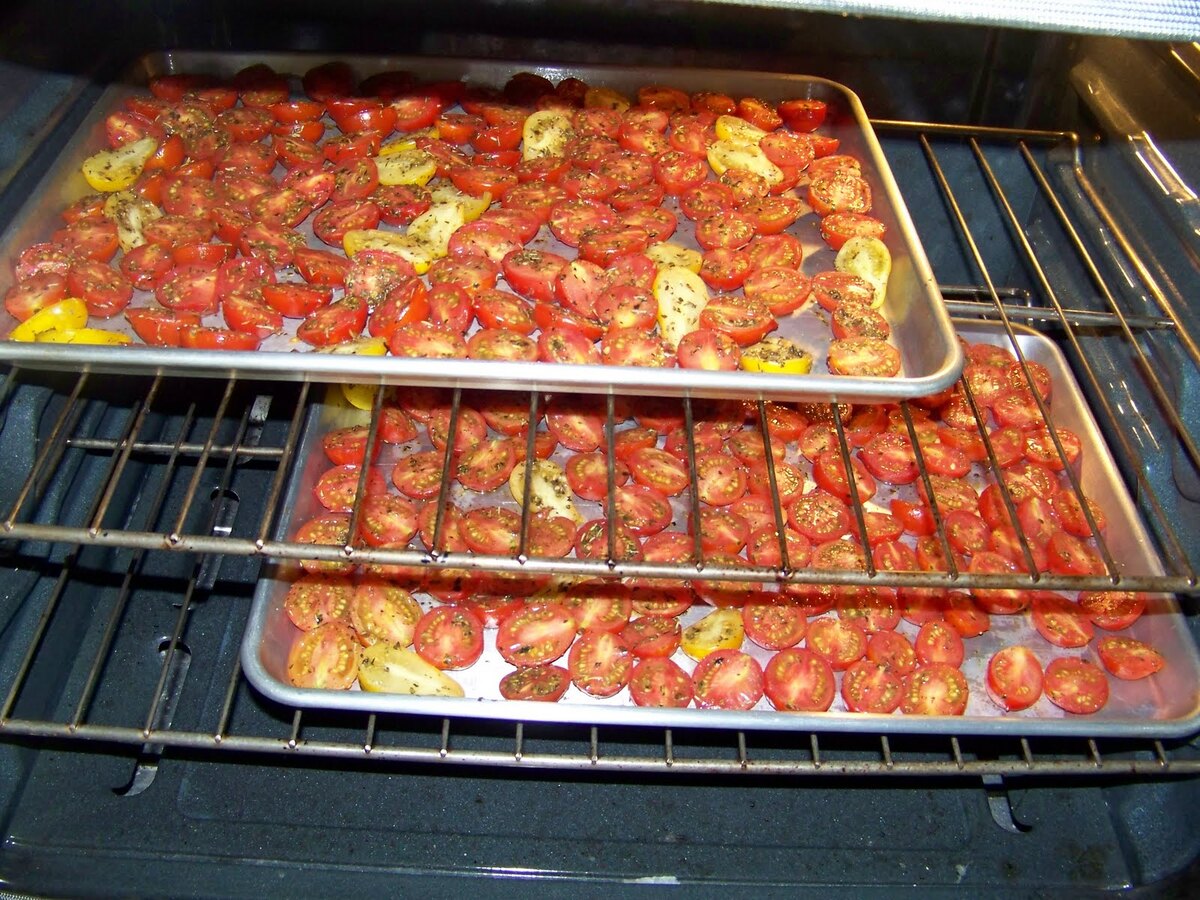

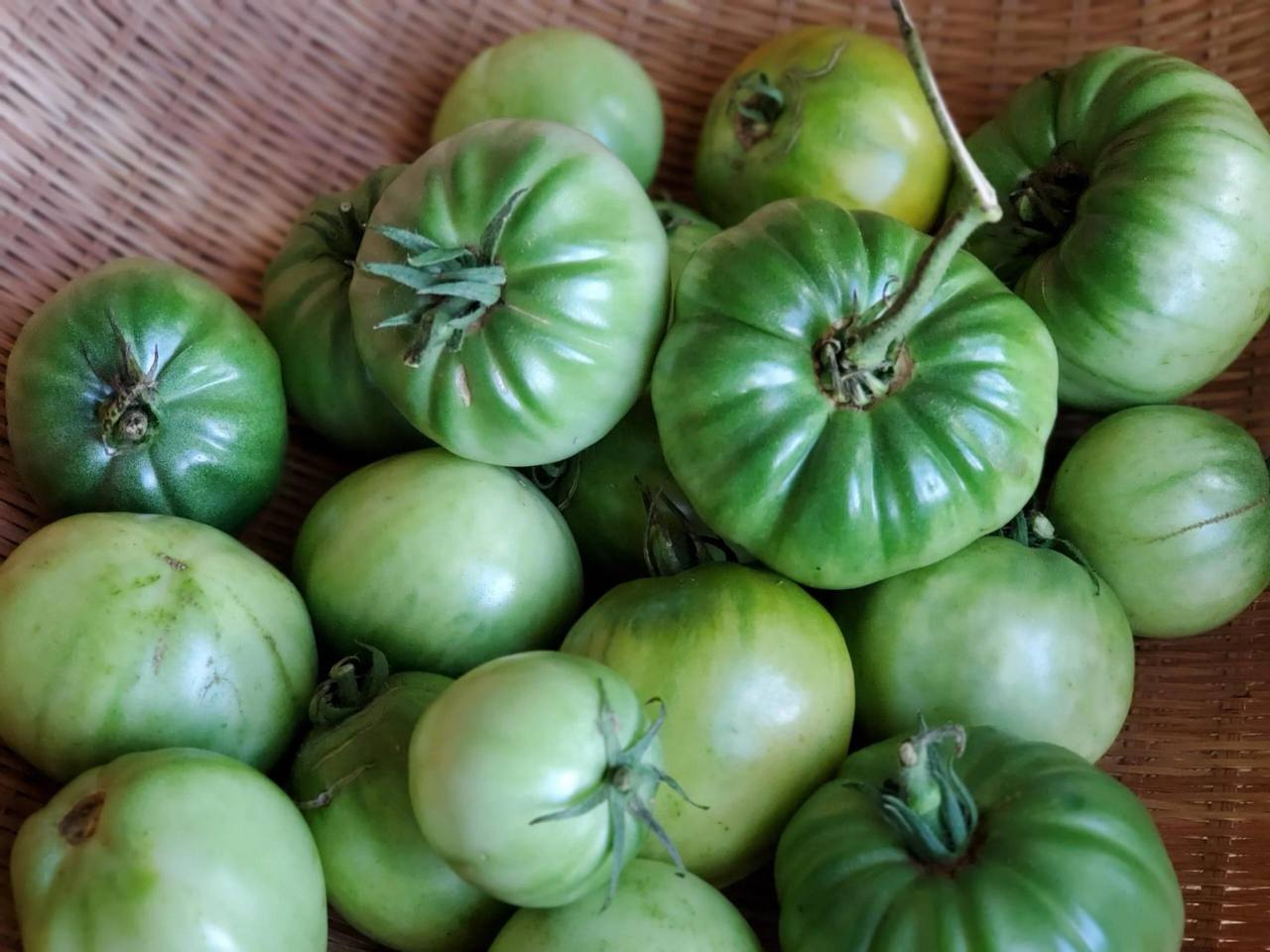

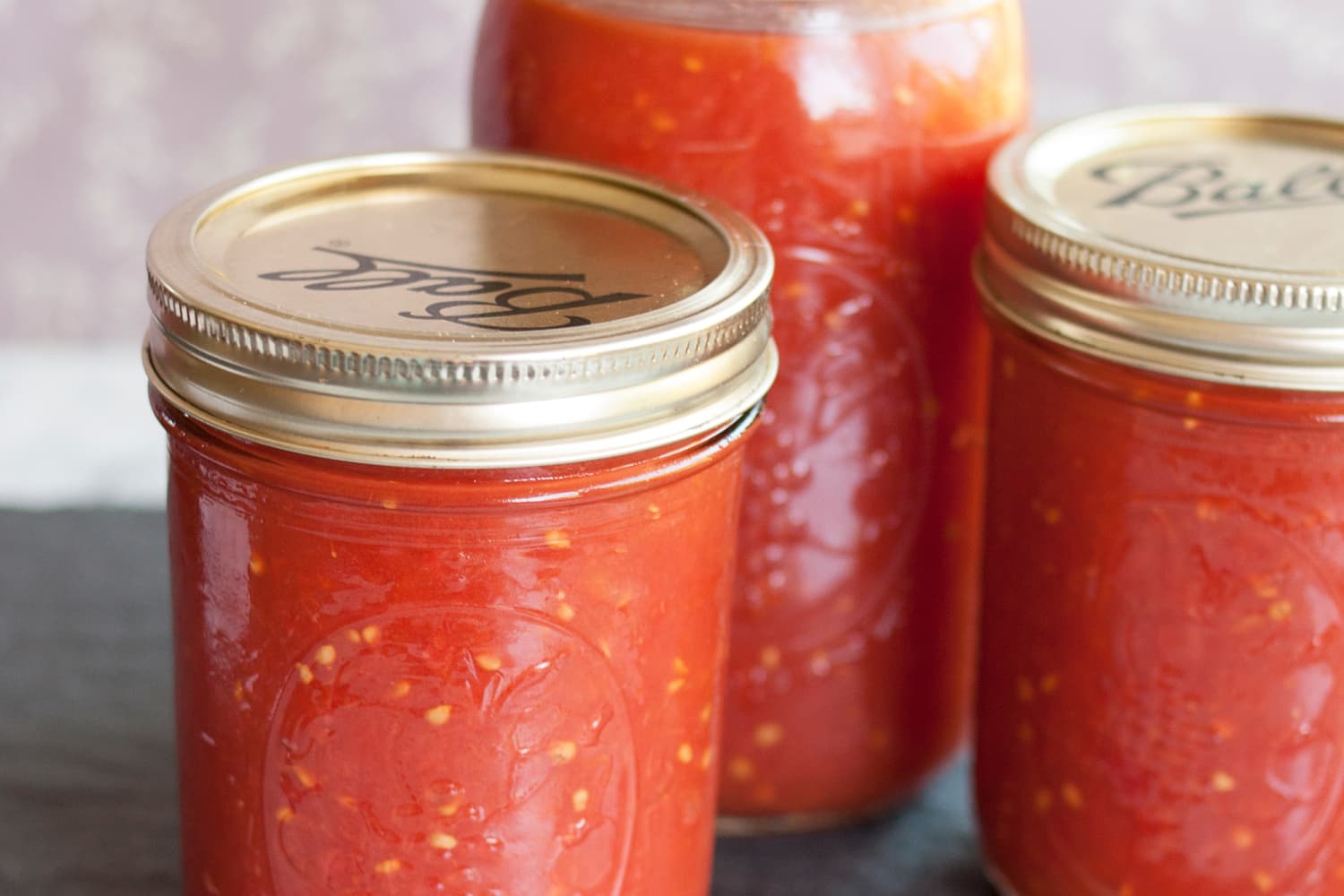
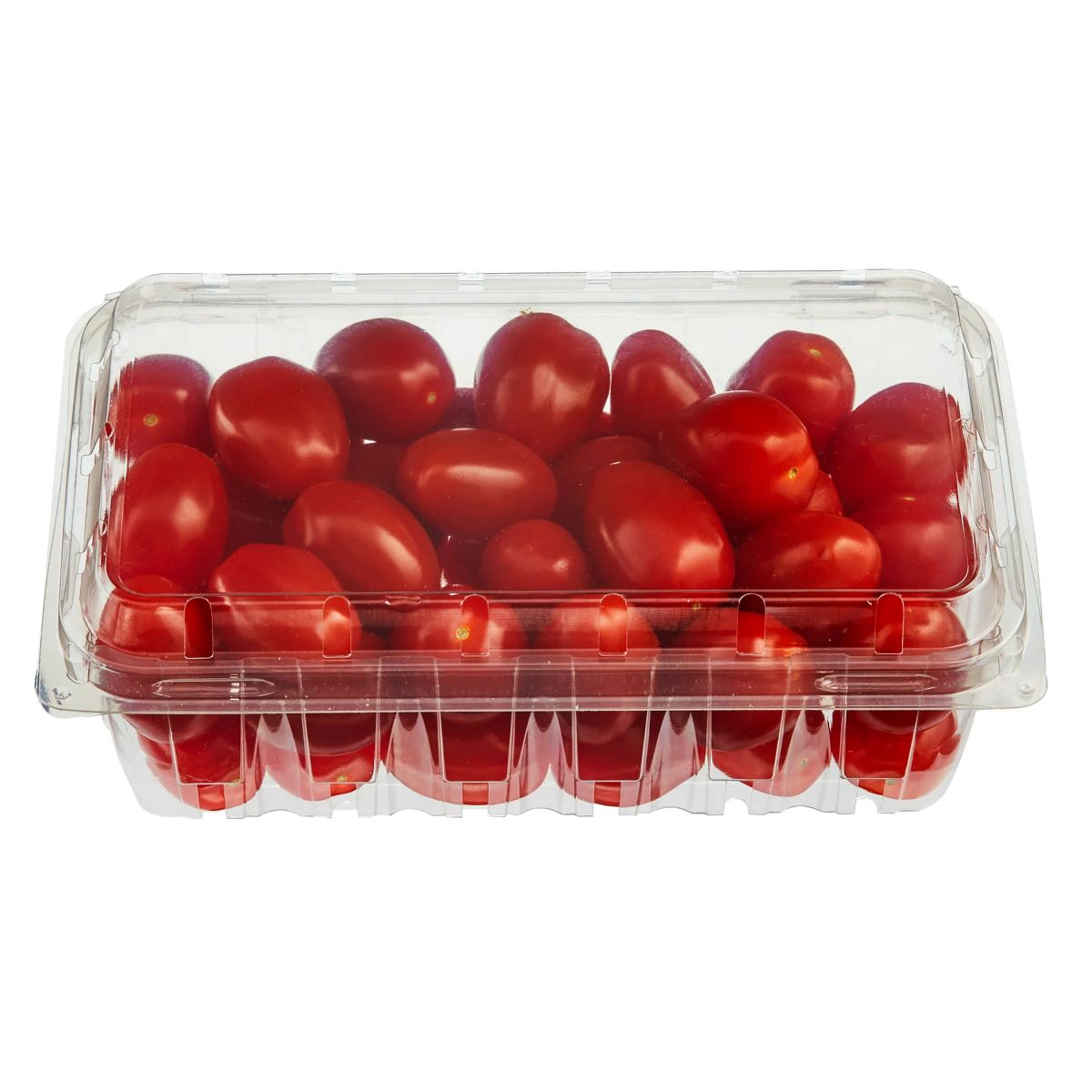
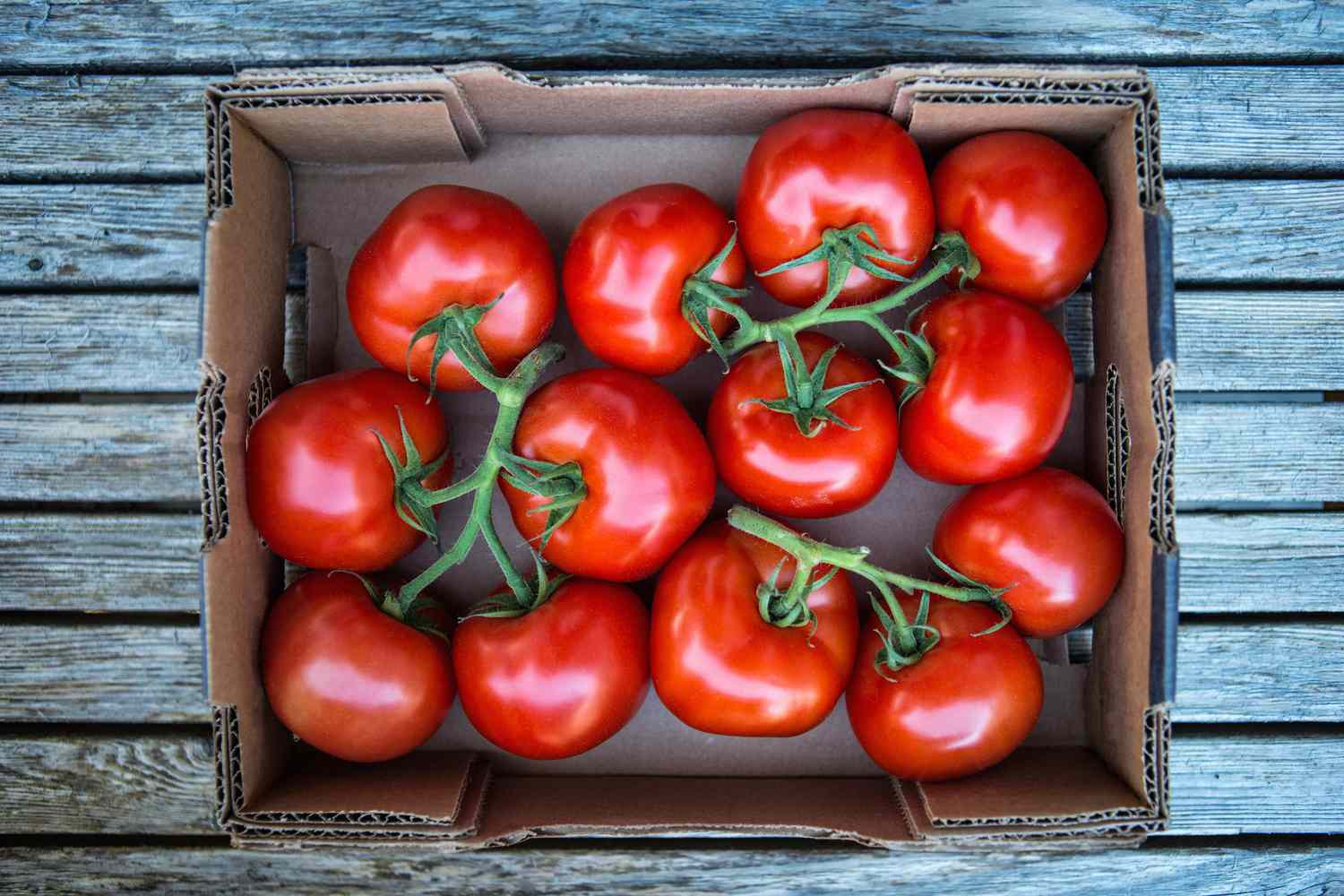

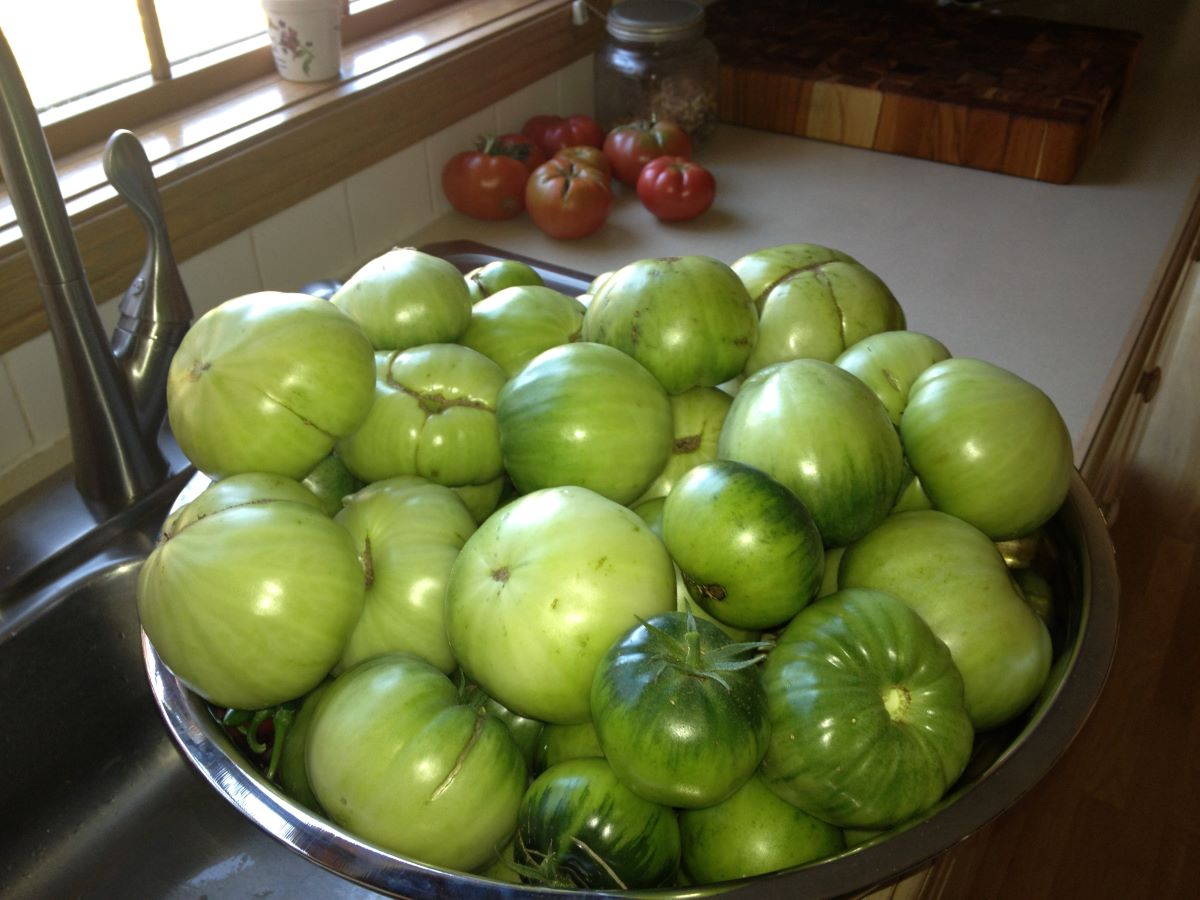



0 thoughts on “How To Store Diced Tomatoes”